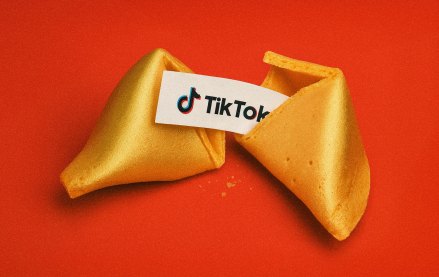Save 50% on a 3-month Digiday+ membership. Ends Dec 5.
‘We need to see ourselves as a media business’: AC Milan’s endgame for content

Football clubs are scrambling to get into the content business, and AC Milan is jumping on the trend.
The Italian football club has joined the likes of Chelsea, Real Madrid, FC Barcelona and Bayern Munich in owning its own production arm. Like those divisions, ‘The Studios: Milan Media House’ will develop, produce and distribute all the club’s audiovisual content, whether it’s a training montage for its social channels or a commercial video for a sponsor.
The new unit is led by AC Milan’s marketing and digital director Lamberto Siega, who will manage a team of 40 execs across production and creative from the club’s headquarters. Some of those roles are part-time, around 20% according to the club, giving Siega the flexibility to dial spending up or down depending on what projects are lined up. He oversees it all from one control room with seven workstations and a voice-over room for match commentary and podcast recordings. On occasion, the space will be rented out to commercial partners and other companies.
In other words, AC Milan is focused on turning all its digital content into cash generators. Doing so means publishing content on as many third-party channels as possible in the hope that doing so raises the chance of someone in one of those places consuming content from AC Milan and subsequently moving to one of its owned platforms to view more. Having a cadence of content and broad distribution should — at least in theory — grow a social media following and opportunities to capture first-party data. This helps bolster sponsorship value, said Siega.
Take the club’s Twitch channel. It has amassed over 41,000 followers since it launched in December. Over this period, AC Milan has produced around 40 videos for the channel. Posts mainly focus on interviews with special guests such as players, legends and VIPs. Soon, viewers will have the chance to interact live during the pre-match press conference with the first team coach.
It’s a similar plan for TikTok, where the club has had a profile since last January. Since then, it has racked up more than 20 million likes, which puts it ahead of other Italian football teams on the social network, said Siega. It goes some way to supporting the club’s plan to keep its output on TikTok focused on giving fans a more lighthearted take on the club, from footage of a player performing tricky skills to behind the scenes posts designed to capture the rapport among the team. That’s why in December, AC Milan launched an official TikTok challenge with sponsor Skrill, a digital wallet provider, that’s just passed one billion views.
Having a cadence of content and broad distribution should grow a social media following and opportunities to capture first-party data. This helps bolster sponsorship value, said Malph Minns, managing director of agency Strive Sponsorship.
Siega expanded on the point: “It’s a way to get the fans into your ecosystem to get data from them as well as identify touchpoints that we can leverage so that we’re not only reliant on third-parties.
It’s why his team is developing a membership program that wil span all the club’s owned channels, from its e-commerce site, to its TV channel, the ticketing platform to its app.
“Whilst for many clubs media rights payments, matchday revenue and sponsorship make up a large share of income, they recognise these traditional income streams each face their own challenges,” said Minns. “So they are looking to both diversify revenue whilst also increasing the depth of assets they have available to sell to maintain value.”
AC Milan’s media house is the culmination of a two-year process that saw AC Milan either centralize or internalize all aspects of content production. Previously, it hired writers from an agency to produce and present content for its TV channel, for example. Now, those writers are on the club’s payroll, giving Siega license to expand their coverage to other areas like presenting streams for the club’s Twitch channel.
The cost savings are clear. However, chief revenue officer Casper Stylsvig is adamant that any cost efficiencies gained are a byproduct of the club’s efforts to reach more football fans who live abroad through content.
“We need to see ourselves as a media business and so much of that is dependent on how close we can get those fans in Brazil, the Middle East, Japan and other countries where people are too far to reach the stadium,” said Stylsvig . “It’s the big problem for football clubs and no one seems to have cracked it yet.”
More in Media

TikTok Shop sheds bargain-bin reputation as average prices climb across categories
An analysis by e-commerce intelligence firm Charm shows average prices climbing across more than a dozen key categories.

Ad Tech Briefing: The Programmatic Governance Council is a bid to reset power dynamics
As tensions over TID and GPID peak, Tech Lab is convening a council to hash out commercial ground rules.

Newsweek is building an AI Mode-like experience to customize homepages for readers
Newsweek is building an AI homepage modeled after Google’s AI Mode to increase engagement and offset declining search referrals.








